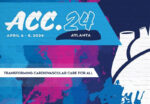Multiple studies support the use of an early invasive approach in high risk patients with non-ST elevation acute coronary syndrome (NST ACS). This benefit of an invasive strategy over the expected management has been shown in randomized studies and meta-analysis. Patients with a history of cardiac artery bypass graft (CABG) represent approximately 10% of ACS<a href="https://solaci.org/en/2024/06/10/patients-with-cabg-history-and-new-n-st-acs-routine-invasive-strategy/" title="Read more" >...</a>
TAVR vs SAVR in Los Risk Patients: 10-Year Outcomes of the NOTION Trial
Transcatheter aortic valve replacement (TAVR) has revolutionized the treatment of patients with severe aortic stenosis (AS). Randomized studies have shown the benefits of TAVR in patients at prohibitive surgical risk, as well as high and intermediate risk. The NOTION trial (Nordic Aortic Valve Intervention Trial) randomized patients with low risk severe AS to TAVR and<a href="https://solaci.org/en/2024/05/28/tavr-vs-savr-in-los-risk-patients-10-year-outcomes-of-the-notion-trial/" title="Read more" >...</a>
Quality of Life in Medium-Risk Patients Treated with TAVR vs SAVR
Transcatheter aortic valve replacement (TAVR) and surgical aortic valve replacement (SAVR) have demonstrated similar outcomes in symptomatic aortic stenosis patients (at high or intermediate risk) in terms of 5-year survival. When evaluating the quality of life (QoL) of these two treatment strategies in patients with high surgical risk, there were no significant differences at 5<a href="https://solaci.org/en/2024/05/10/quality-of-life-in-medium-risk-patients-treated-with-tavr-vs-savr/" title="Read more" >...</a>
TAVR in Bicuspid Valves
Bicuspid aortic valve (BAV) disease affects 1%-2% of the population and manifests with severe aortic stenosis in the middle-aged. It characterizes for a very different anatomy with more calcification than the tricuspid aortic valve. At present, surgical aortic valve replacement (SAVR) is the first treatment indication. TAVR in this scenario has shown, in different studies,<a href="https://solaci.org/en/2024/05/07/tavr-in-bicuspid-valves/" title="Read more" >...</a>
Reinterventions in TAVR with Self-Expanding Valves
TAVR treatment of severe aortic stenosis is becoming more and more common, showing comparable evolution, or even superior in some studies when using the femoral approach, vs. surgical aortic valve replacement (SAVR). One of the current challenges is TAVR durability vs. SAVR. Even though 9 or 10 years has been deemed acceptable by current standards,<a href="https://solaci.org/en/2024/05/03/reinterventions-in-tavr-with-self-expanding-valves/" title="Read more" >...</a>
SMART Trial: What is the Best Valve for Small Annuli?
Transcatheter aortic valve intervention (TAVI) has been shown beneficial over the years. However, a significant subgroup of patients with small aortic annulus, which make approximately one third of cases and have a higher incidence in women, face additional challenge, such as higher incidence of mismatch, reduced exercise capacity and shorter durability. Self-expanding and balloon expandable<a href="https://solaci.org/en/2024/04/19/smart-trial-what-is-the-best-valve-for-small-annuli/" title="Read more" >...</a>
ACC 2024 | RELIEVE-HF
Heart failure is characterized by increased left atrial filling pressure and venous congestion which intensify with exercise and volume burden, and makes conventional medical management hard. In this context, interatrial shunting might offer a self-regulating mechanism, as shown by the Ventura IAS study. The aim of this study was to assess the safety and efficacy<a href="https://solaci.org/en/2024/04/10/acc-2024-relieve-hf/" title="Read more" >...</a>
Lithotripsy in the “Real World”: REPLICA EPIC-18 Study
Severe persistent calcification of the coronary arteries has been associated with different factors, such as advanced age, hypertension, dyslipidemia, smoking, and kidney failure, among others, and continues to be one of the challenges to stent implantation because of it impact on device advancing, drug release and adequate positioning. Intravascular lithotripsy (IVL) is a technique that<a href="https://solaci.org/en/2024/04/05/lithotripsy-in-the-real-world-replica-epic-18-study/" title="Read more" >...</a>
NOTION Trial: 10 Year Outcomes, TAVR vs. SAVR in Low Risk Patients
Transcatheter aortic valve replacement (TAVR) has revolutionized the treatment of patients with severe aortic stenosis (AS). Randomized studies have shown the benefits of TAVR for treating inoperable patients, as well as high and intermediate risk patients. The NOTION (Nordic Aortic Valve Intervention Trial) randomized patients with low risk severe AS to TAVR or SAVR (surgical<a href="https://solaci.org/en/2024/03/22/notion-trial-10-year-outcomes-tavr-vs-savr-in-low-risk-patients/" title="Read more" >...</a>
Short-Term Outcomes of TAVR in Asymptomatic or Minimally Symptomatic Patients
Aortic valve replacement (AVR) is indicated for symptomatic aortic stenosis (AS), while close follow-up is recommended for asymptomatic patients, unless they have elevated aortic gradients, low ejection fraction, or abnormal stress tests. However, the optimal timing to perform AVR is uncertain, especially with recent evidence suggesting that patients with AS associated with signs of myocardial<a href="https://solaci.org/en/2024/02/21/short-term-outcomes-of-tavr-in-asymptomatic-or-minimally-symptomatic-patients/" title="Read more" >...</a>








